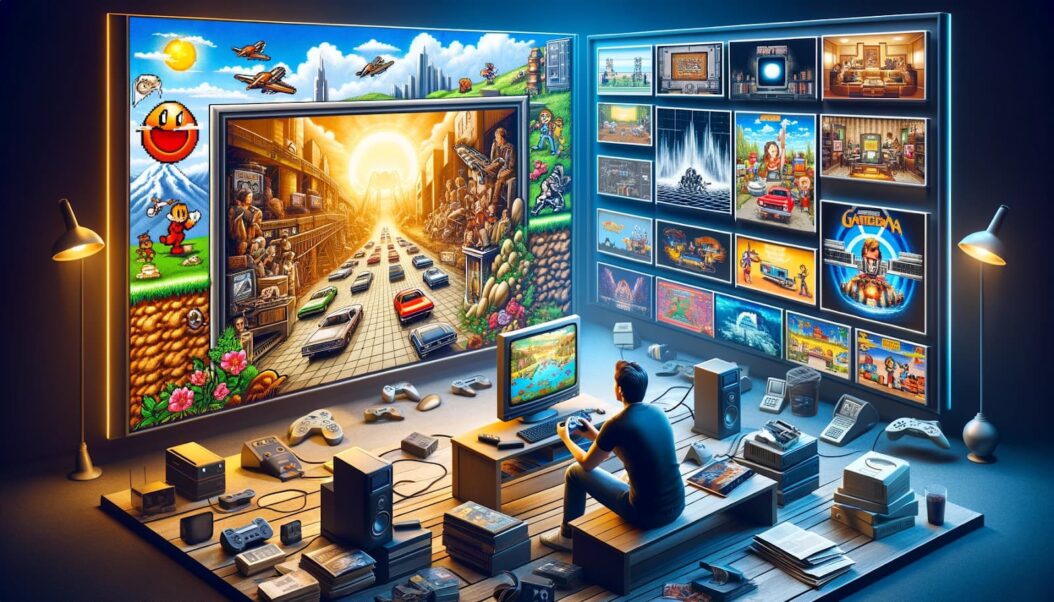Nostalgia Gaming: How to Play Old Flash Games Today

In a time when gaming is frequently characterised by state-of-the-art visuals and vast virtual environments, there is a rising nostalgia for the more whimsical, carefree internet gaming days of the past, specifically the Flash game era. These well-known games, which were once the backbone of online entertainment, captivated players all over the world with their unique blend of charm and inventiveness. Now that Adobe Flash is nearing its end, fans are looking for ways to relive these timeless moments. This trip into the realm of retro gaming not only brings back fond memories but also shows how to play these outdated Flash games in the contemporary digital environment, closing the gap between the past and present in the gaming industry.
The Rise and Fall of Flash Games
The story of Flash games’ rise and eventual fall is one of technology advancement and shifting online culture. Flash games were a major part of internet culture in the late 1990s and early 2000s, providing a hitherto unseen platform for easily accessible and varied gaming experiences. With the help of Adobe Flash Player, these games took off on well-known websites like Newgrounds, Miniclip, and Armour Games. Players could choose from a wide variety of genres, from straightforward puzzle games to complex strategy games, and they catered to a broad and varied audience. However, with the emergence of HTML5, a more flexible and secure web technology, this golden age saw a slow downturn. This change, together with Adobe’s 2020 plan to stop supporting Flash Player, was a big setback for Flash games as many of them were incompatible with contemporary web browsers, therefore ending a crucial period in the history of online gaming.
Nostalgia and Cultural Significance
Beyond just being entertaining on the surface, flash games have left a lasting cultural and sentimental impression on a generation. They are representative of a bygone age in gaming history, when inventive gameplay, inventiveness, and simplicity had a greater impact than the high-fidelity graphics that now rule the game industry. A sense of community and shared digital adventure were fostered by these games, which for many were more than just digital diversion. They served as entry points into the rapidly expanding realm of online connection. Beyond only gameplay, Flash games evoke a sense of nostalgia for bygone eras of youthful exploration and discovery in the uncharted territories of the internet. This feeling is a reflection of a wider fondness for an era when the digital world appeared more intimate, smaller, and full of opportunities.
Preserving Flash Games
Attempts have been made to keep these games alive even after Flash was discontinued. Numerous initiatives have emerged to preserve this segment of the history of the internet, such as Flashpoint and Ruffle.
- Many beloved Flash games may have come to an end with Adobe Flash’s discontinuation, but committed preservationists have stepped in to make sure these bits of online history survive. One of the most noteworthy initiatives is the extensive webgame preservation project called Flashpoint. Through the use of special emulation technology, Flashpoint enables players to play Flash games offline. This approach preserves a vast library of games by emulating not only Flash but also a variety of other online technologies. By acting as a digital museum, this project preserves the history of Flash games for enjoyment and research in the future.
- Concurrently, Ruffle has become yet another essential tool for Flash game preservation. Ruffle is a Flash Player emulator created in the Rust computer language with the goal of integrating seamlessly with contemporary web browsers. Ruffle, as opposed to the original Flash Player, reduces security flaws that were becoming more and more of a worry in Adobe’s products. Ruffle acts as a link between the old and the new, enabling users to play Flash games safely and directly in their browser without any security problems. This makes classic games playable and accessible for audiences in the modern day. The cultural relevance of Flash games and the dedication of the online community to preserving this piece of internet history are highlighted by these preservation efforts.
How to Play Flash Games Today
There are a few main ways to play Flash games in the modern digital world, and each one provides a different way to get these classic games.
Flashpoint provides a simple method for playing Flash games again:
- Download and Install: Flashpoint comes in many versions to suit user requirements, such as a full version that includes the entire game library and a lighter edition that only includes some content. The first step is to download and install Flashpoint.
- Browse the Library: Following installation, players are free to peruse Flashpoint’s vast collection of thousands of games that span a wide range of genres and styles, perfectly encapsulating the diversity of the Flash era.
- Play Offline: By allowing users to choose and engage in games without the requirement for an internet connection, the offline gaming feature allows users to recreate the classic Flash gaming experience in a contemporary context.
An alternate strategy offered by Ruffle is particularly helpful for playing online:
- Installation: Depending on whether they want to play online or offline, users can install Ruffle as a desktop standalone application or as a browser extension for real-time emulation.
- Playing Games: If the website accepts this emulator, Ruffle will automatically identify and launch any Flash games found on it.
- Dedicated Websites: A collection of carefully chosen Flash games are available on dedicated websites that have integrated Ruffle, guaranteeing compatibility and a smooth gaming experience.
Dedicated Websites and Web Archives:
Apart from these resources, a number of specialised websites and web archives have assumed responsibility for maintaining Flash games. These websites frequently offer a playable library of Flash games by utilising technologies such as Ruffle. By cataloguing and providing access to games that could have otherwise been lost to time, they act as virtual museums. This method offers a thorough resource for both play and historical appreciation by preserving not just the games but also the background and history of the games.
Community and Sharing
Rooted on a mutual love of vintage classic games, the nostalgia gaming community is a vibrant and fervent group of people. It flourishes on a variety of platforms, such as social media groups, online forums, and specialised websites where fans congregate to share stories, memories, and love for their preferred Flash and retro games. These forums are essential for sharing useful information and advice on how to access and play these classic games in the current digital world, in addition to helping people remember their favourite games from the past. They frequently get into debates over the best resources and techniques for maintaining these games, making sure that the rich history of early online gaming is still available and fun. By pooling their expertise and experiences, these vintage games solidify their place in gaming history and promote a sense of community and collective guardianship over the priceless memories and cultural value they evoke.
Conclusion
Flash games have left behind more than simply harmless online diversion. They stand for a time of digital community and innovation. These games are still played today thanks to the resources at our disposal, serving as a tribute to the timeless attraction of well-thought-out game design and cooperative gameplay as much as sentimental artefacts. Flash game preservation aims to preserve a portion of internet history for future generations to explore and enjoy, in addition to keeping the games alive.





